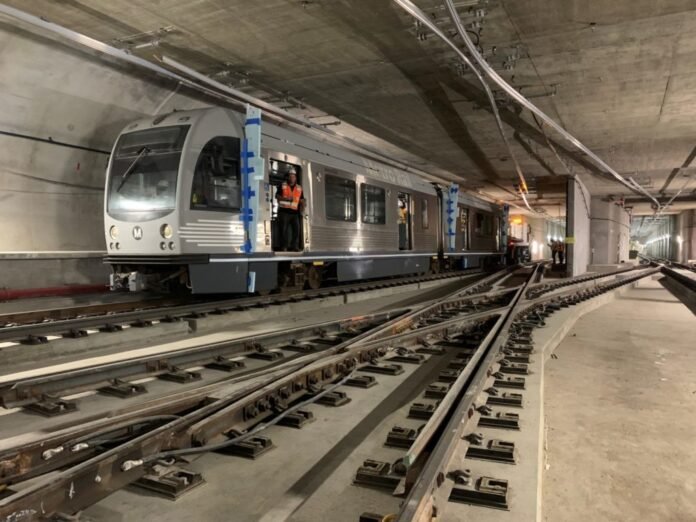Transit enthusiasts (and tourists, for the sake of the gods), rejoice: The Metro Regional Connector—Metro’s massive, ten-years-in-the-making project—will open June 16 with free rides, according to officials.
So what is the Metro Regional Connector?
The two-mile line eliminates the need to transfer between the L, A and E lines at DTLA’s Metro Station—and thus hands commuters seamless rides from Long Beach to Azusa in one hour and 58 minutes or Santa Monica to East L.A. in one hour and nine minutes.

The Regional Connector includes three new underground stations:
- the Little Tokyo/Arts District Station;
- the Historic Broadway Station;
- and the Grand Avenue Arts/Bunker Hill Station, 100 feet deep, making it the deepest train station on the West Coast
“For the first time since the Blue Line opened in 1990, it will now offer a single-seat ride from Long Beach to Union Station,” said L.A. County Supervisor and Metro Board Member Janice Hahn in a statement. “The Regional Connector will mean that jobs and education opportunities, which used to require two to three transfers for residents in my district, will now be just one train ride away.”
Both criticism and praise for the Metro Regional Connector
It does not come without its criticisms: The project is two years behind schedule and an alarming $335 million over its original $1.42-billion price tag—a price balloon that occurred just two years into the project’s lifespan in 2015.

It also came with its distinctly unique discoveries and building characteristics: Tunnel excavations found millions-of-years-old whale bones.
The Grand Avenue/Bunker Hill Station is 100 feet underground—the deepest on the West Coast and requires six flights of escalators or elevators to access.
When it came to construction along DTLA’s beloved arts and music stretch along Grand Avenue,
engineers had to construct a track sans vibrations. Why? To preserve the concert going experience for patrons at Walt Disney Concert Hall, Dorothy Chandler Pavilion, and the Colburn School.


